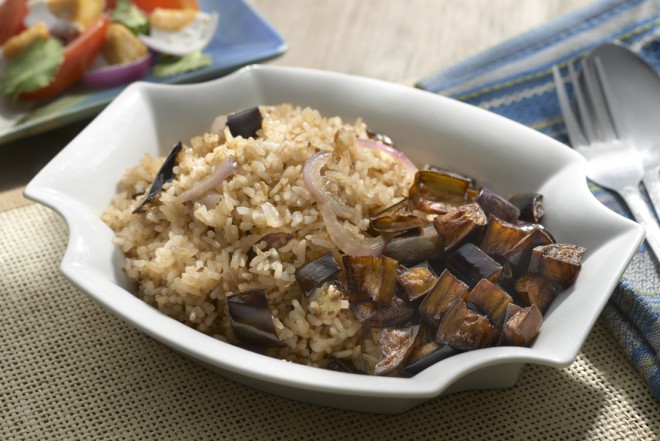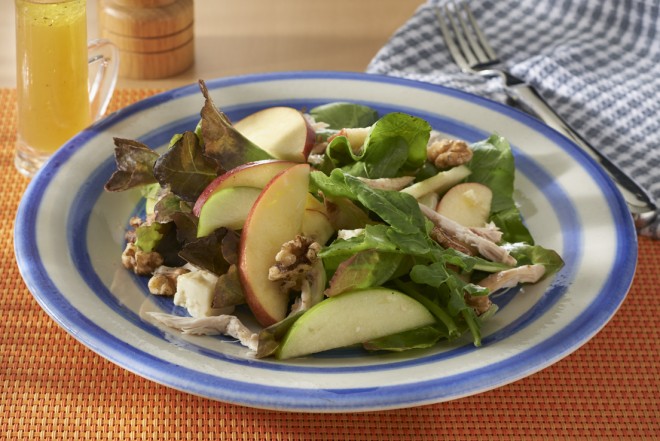
Breakfast may be the most important meal of the day, but studies show that this morning repast is also the most skipped source of body nourishment.
As adults today often opt for a little extra time in snooze mode, fewer and fewer children also eat breakfast. It’s a case of leading by example, said Nestle Philippines corporate nutritionist Catherine Sarmiento.
“Developing children’s habits starts with the parents,” Sarmiento said.
If parents are too exhausted to prepare breakfast, or too busy to sit down with their children at the breakfast table, then children, she noted, will never pick up the habit or learn its significance to the body.
In its effort to encourage a good breakfast habit among Filipinos, Nestle launched an exclusive Nestle Club cookbook called “I Can’t Believe It’s Breakfast,” now available for free at the Nestle Club website until Nov. 30. Sign up for a free membership and the cookbook will be delivered to your doorstep. For existing members, update your data and save the updated profile to verify your membership.
“I Can’t Believe It’s Breakfast” contains 30 easy-to-follow breakfast recipes created by Nestle chef Tess Sutilo. There’s enough variety in the book—from omelet and yogurt pie to smoked salmon and danggit ensalada—to keep the palate excited. Some entries are for leisure days that allow more time for prepping and cooking, while others are two-steps-only quick meals.
Convenient
“We want it simple and convenient,” said Aurora Alipao, Nestle VP for communications and marketing services. “That’s why some recipes take a maximum of two steps to make. We also made sure all ingredients are readily available.”
Each dish contains information on preparation, cooking time, serving sizes and nutrition facts per serving, including energy (kcal), carbs (g), protein (g) and fat (g). It also gives pointers about the dish.
Talong and Bagoong Fried Rice, for example, has a reminder, located at the bottom of the page, to use bagoong alamang (shrimp paste) in moderation, and recommends the use of herbs and spices in lieu of condiments high in sodium.
The cookbook also gives the lowdown on some key ingredients of each dish. For the recipe mentioned above, there is useful information on bagoong alamang, how it is preserved using salt and later on sautéed in onion and garlic for flavor. These details are helpful especially to families who are watching their sugar, sodium or cholesterol intake.
There are “Breakfast Tips” at the end of the book to guide families on how to make breakfast a part of their everyday lives.

Aside from adults leading busy lives, another reason people skip breakfast is so they could save on calories. But what many people do not know, Sarmiento said, is that skipping breakfast does the exact opposite.
“Studies have shown that people who habitually skip breakfast have higher BMI (body mass index) compared to those who don’t,” Sarmiento said. “Breakfast should contribute 20-30 percent of your daily calorie requirement. Allotting 50 percent for lunch and 50 percent for dinner will stress out your digestive system.”
Eating breakfast, she continued, helps maintain body weight. People who eat breakfast will most likely not overeat in their next meal. When someone does not eat breakfast, the body goes into starvation mode. When that happens, the metabolism slows down in an attempt to preserve the body’s stored energy.
Panic mode
In short, your body doesn’t know that you’re doing it for vanity purposes. What it recognizes is you haven’t eaten for a good number of hours, so it’s now on panic mode. It’s working overtime to keep you “alive” by holding on to your stored energy. Stored energy, in this case, is fat.

Skipping breakfast and bingeing on lunch or dinner, therefore, is a disaster. The body, now with a slower metabolism, has to deal with the sudden supply of excessive food. That means all those calories remain unconsumed in a body that is already significantly less efficient in burning them.
“For better weight management,” Sarmiento said, “we always encourage people to eat a balanced, nutritious breakfast. The fiber will help you feel full longer, build a stronger digestive system and even maintain healthy levels of blood cholesterol.”
She added that eating breakfast also promotes healthy cognitive development in children. They are more active and alert in terms of problem-solving, she said, since they have more energy. Drinking milk or other fortified breakfast beverages supports bone and heart health.
Consume 30 percent of your daily calorie requirement for breakfast, another 30 percent for lunch and 25 percent for dinner. The remaining 15 percent, Sarmiento said, should be for snacks. A serving size for children is generally half of that for adults—for example, half a boiled egg.
Always follow the “Go, Glow, Grow” food plate, Sarmiento added. Half of the plate must contain “Glow” food such as fruits and veggies. One-fourth of the plate goes to “Grow” food, proteins such as meat, cheese, nuts. And another 1/4 to “Go” food such as carb sources like bread, pasta, cereals.
There are more than 1 million members of the Nestle Club nationwide, Alipao said. Each will get a free copy of the cookbook provided they update their profiles.
Visit Nestle here to update profile or register.
Follow the author on Twitter and Instagram.
















































